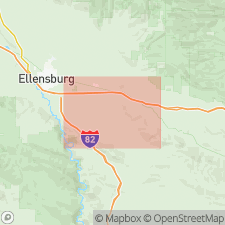
- Usage in publication:
-
- Lmuma Creek Member*
- Modifications:
-
- Principal reference
- Dominant lithology:
-
- Sandstone
- Tuff
- Basalt
- AAPG geologic province:
-
- Eastern Columbia basin
Summary:
Pg. 9; geol. map. Lmuma Creek Member of Ellensburg Formation. Light-gray to white, medium-grained, tuffaceous and basaltic (less common) sandstone, and locally diatomaceous siltstone. Thickness less than 15 m [49.2 feet]. Includes Quincy diatomite [bed] (informal). Interbedded with volcanic subunits of the Wanapum Basalt of the Columbia River Basalt Group. Previously called †Squaw Creek Member of Ellensburg Formation. Age is middle Miocene.
Name Squaw Creek Member of Ellensburg Formation herein renamed Lmuma Creek Member, in accordance with the Department of the Interior's Secretarial Order 3404, discontinuing use of derogatory term squaw.
[Type section: on Lmuma Creek [previously called Squaw Creek], in T. 15 N., R. 20 E., [Badger Gap 7.5-min quadrangle], Kittitas Co., WA (Bingham and Grolier, 1966). The geographic feature Squaw Creek, from which the geologic name was taken (see Bingham and Grolier, 1966, p. G8), was renamed Lmuma Creek (U.S. Board on Geographic Names, January 1999, GNIS FeatureID 1508662).]
Source: Publication.
For more information, please contact Nancy Stamm, Geologic Names Committee Secretary.
Asterisk (*) indicates published by U.S. Geological Survey authors.
"No current usage" (†) implies that a name has been abandoned or has fallen into disuse. Former usage and, if known, replacement name given in parentheses ( ).
Slash (/) indicates name conflicts with nomenclatural guidelines (CSN, 1933; ACSN, 1961, 1970; NACSN, 1983, 2005, 2021). May be explained within brackets ([ ]).

